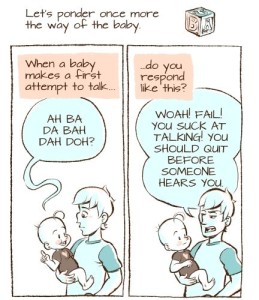Last month, the Cultural Data Project released a study they commissioned to investigate the use of data by arts organizations and what impediments to effectiveness exist.
If you aren’t familiar with the Cultural Data Project, it is an attempt to collect data from arts organizations across the country in order to assemble as comprehensive a set of data as possible. While this is useful for research, it is also meant to provide arts organizations with analysis each can use to better understand the environment in which they operate.
The problem is, few arts organizations are taking advantage of this opportunity.
“Many of the organizations that provide information to the CDP are not taking advantage of the reporting tools, contributing to the sense that CDP is something that they contribute to rather than something they derive value from. “Because of the barriers present in accessing data (e.g., lack of time and data-use training, clunky and difficult to use databases), many nonprofits simply do not attempt to make better use of data at their disposal that could help improve organizational performance.”
This is attributed in part to what respondents characterize as a “collect data first, ask the questions later” approach. The report suggests there is a “more is better” approach that leads to more data being collected than is needed, as well as a lack of ability at framing effective questions that will help move the field forward.
This approach is reinforced by funders: (my emphasis)
“Funder requests often determine what kind of data organizations choose to collect and may crowd out organizations’ interest in asking questions that could inform their own decision-making. This may contribute to a sort of vicious cycle in which organizations’ primary experiences with data are framed as a duty to a funder, and since the data requested by the funder may not be what the organization itself needs to know for its own reflection and improvement, data collection comes to be perceived as a ‘cost of doing business’ rather than an investment that brings strategic value to the organization”
An observation I had really never considered is that while administrative staff works with research data all the time, there is little effort made to get artistic staff using it for their decision making.
“As the previous participant noted, “arts administrators have acquired a taste for data used in financial management, fundraising, audience development and advocacy decision-making. But there is little data on artistic choice, much less data that allows us to explore the relationships between artistic programming and audience or organizational sustainability.”
[…] (many paragraphs later, my emphasis)
But these experts emphasized that until data-informed decision-making takes hold in programming departments, we won’t truly be able to say that the cultural sector is effectively using the available cultural data or using it to full effect. “Until we can engage artists and curators in examining audience, market and trend data, we can never really make progress as a field,” said one. “I can count on one hand the number of times that I’ve been allowed to present research to actors, dancers and musicians. They are the ones who can move the world.”
Because data collection is seen as such a chore, according to the report the job is often assigned to “low-salary, junior-level staffers who are given little in the way of training and professional development.” As a result, the collection is executed poorly and there is low value placed on the data.
The Cultural Data Project would like arts organizations to see data as a “tool not an end.” The study respondents felt that one of the areas of highest value for arts organizations is using the data to establish a benchmark against which they can measure themselves, as well as a source of information about practices by groups similar to themselves.
The biggest gap in the arts knowledge economy is in the area of practice,” noted one contributor. “What new or different artistic programs are leading to successful artistic outcomes? What new or different business practices are leading to successful operational outcomes? … Another added that most organizations are eager for this kind of information about their peers, which would take the concept of benchmarking into new and valuable areas: “I think cultural organizations would welcome as much information as possible about the types of programming that are being offered by other similar organizations, along with summary-level data about audience participation or attendance…. Is it new and different? Was it successful? Data that address these questions would be lapped up.”
As you might imagine, among the recommendations for the future, (and there are many more issues addressed than I have covered here), are shifting the way organizations view, collect and handle data as well as involving artistic staff in the evaluation of data.








Thanks for what you are doing to bring cultural change to the arts. It is so important to represent everyone.…